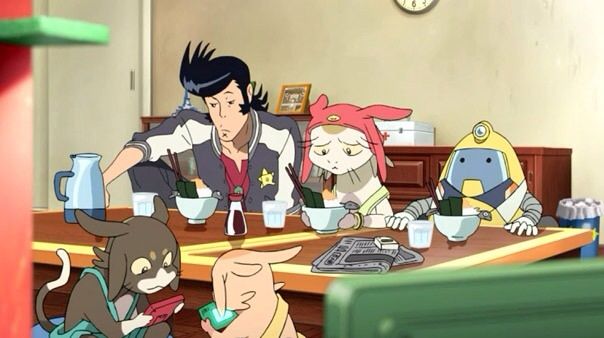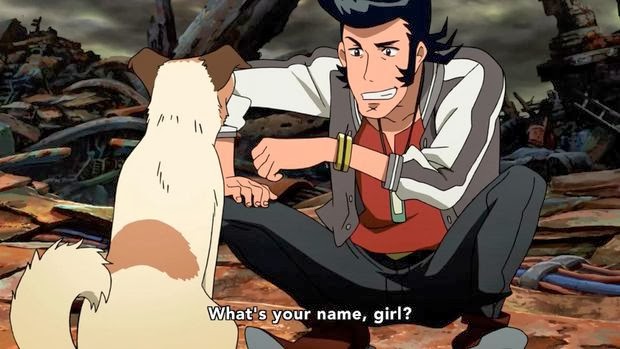

Bebop's Faye Valentine was sexualised to the nines, but was a true femme fatale- there's sadly no equivalent here. The sexist attitudes of Dandy (the character) may well be intended to be satirical, but the point is moot if it's still presented in such a way. There are few recurring female characters, and those that are there are largely stereotypical and there to be gawked at by Dandy (and the audience).
LAIKA SPACE DANDY SERIES
On the negative side of things, the portrayal of women in the series is somewhat lacking. And all the visual splendour is equalled with a high-quality soundtrack- not unusual for a Watanabe production.
LAIKA SPACE DANDY FULL
If that sound like a criticism, it's not meant to be: for any lover of animation this is a rewarding watch, full of fabulous visuals and inventive designs.

A feeling that is helped by the fact that the series has little regard for continuity and merrily kills off the entire cast on multiple occasions. It sometimes feels less like a coherent series and more a kind of experimental playground for its creative team. Resultingly you never really know what to expect from one episode to the next. Almost every episode boasts a separate director and screenwriter, including such luminaries as Sayao Yamamoto and Dai Sato as well as Watanabe himself. Later on the crew of the Aloha Oe bond with a lonely dog in an episode that shares DNA with the legendary tear-jerking Futurama episode Jurassic Bark.Īlthough the humour allows the series to have a consistent tone, each episode manages to feel distinct. Early on, Dandy winds up reluctant guardian to a lost child, in an unexpectedly moving story.

The cause of their war? One side wears only vests, while the other only underwear.Įlsewhere, the show reveals surprising depths and real heart. For example, one stand-out episodes sees Dandy discover two aliens who are the last surviving members of their warring races, but continue their generation-spanning battle. It features some great sci-fi concepts that mark it out as true comedic science fiction- rather than mere parody. Despite the series often trafficking in decidedly lowbrow humour (see Dandy's fixation with Hooters-like restaurant Boobies) on numerous occasions it proves itself to be capable of much more.

You'll find everything from a unique take on a zombie apocalypse to a twist on Groundhog Day. Here, all the episodes operate within a comedic framework, but still shows off an amazing range. Bebop riffed on everything from kung-fu movies and film noir to Alien over the course of it's one and only season. Probably the way in which the series most closely relates to Bebop however, is the way the series shows huge variety. This is a vision of space that is as far away from the grittier outlook that is prevalent in most current sci-fi as you can get. The world of Space Dandy is hugely colourful and diverse in a way that makes Guardians Of the Galaxy look relatively pedestrian. At its very basic level this first 13 episodes sticks mainly to an "alien of the week" format, but this is really just an excuse for a series of loosely connected stories that allow both the writing and animation staff to let their imaginations run wild. This very basic set up is the jumping off for a madcap comedy series, complete with out-of-this-world visuals and some insanely creative writing. The series follows the exploits of the pompadoured Dandy ("A dandy guy in space") who along with a cat-like alien Meow and a robot named QT, combs the galaxy for undiscovered alien species. However, it's important to note early on that despite a few very superficial similarities Space Dandy is a very different kettle of fish, baby. Seeing Shinichiro Watanabe return to space for the first time since Cowboy Bebop, and premièring on Adult Swim's Toonami block in the US before even airing in Japan, it seemed to be a series aiming more at western sensibilities. Space Dandy was always destined to catch the attention of western anime fans.


 0 kommentar(er)
0 kommentar(er)
